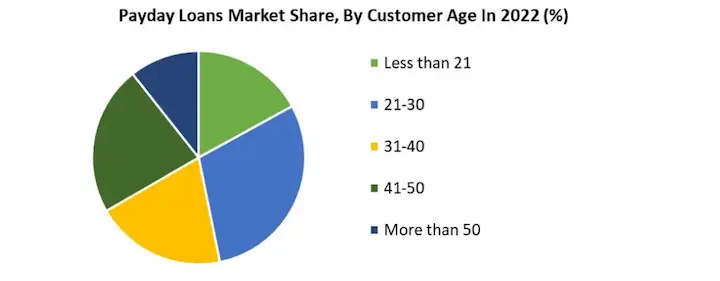Payday lenders provide short-term loans to individuals who require immediate cash for unexpected expenses. They are small in size and have high-interest rates. Payday lending is a controversial industry due to the potential for borrowers to become trapped in cycles of debt. However, it is a viable option for people with limited access to traditional financial institutions. Payday lenders offer various payment services to their customers. The following post explores payday lenders’ different types of payment services and how they work. Understanding the options helps borrowers decide which payday lender to use and how best to repay their loan on time.
Summary
- Payday lenders offer short-term loans with high-interest rates for individuals needing immediate cash for unexpected expenses.
- Automatic debit payment options allow borrowers to repay their loans and eliminate the risk of late payments and associated fees.
- In-person payments at a payday lender location allow borrowers to pay with cash or check and receive customer service from the staff if needed. It’s beneficial for people who prefer face-to-face interactions when handling financial transactions.
- Online payment through a lender’s website is a popular method, allowing borrowers to make payments from anywhere and anytime. Option options such as flexible and fixed payment plans are offered to accommodate borrowers’ financial situations and reduce default rates.
- Choosing the right repayment service is key to managing debt effectively, avoiding late fees and penalties, and improving credit scores.
Automatic Debit Payment Option
Many payday lenders offer an automatic debit option as a convenient way for borrowers to repay their loans. It allows the lender to automatically withdraw funds from the borrower’s bank account on the due date without requiring any action on the borrower’s part. One benefit of automatic payments is that they eliminate the risk of late payments and potential associated fees.
Automatic debits are a helpful solution for borrowers who struggle with managing finances or recalling payment dates. But risks are involved, particularly if the borrower doesn’t have sufficient funds in their account at the time of withdrawal. Borrowers without enough funds face overdraft fees from their bank and the lender.
Most payday lenders require borrowers to authorize automatic withdrawals by signing a contract at the time of borrowing. Others only allow automatic debits from verified accounts to prevent fraud or unauthorized transactions. It’s best for borrowers using automatic payments to monitor their accounts closely and report any suspicious activity immediately.
Auto-debit options are preferable to certain borrowers due to their convenience factor. But alternatives such as manual payments via online banking platforms or physical locations must not go unnoticed by borrowers seeking more control over their repayment process.
It is necessary for consumers looking to use loan products offered by payday lenders to thoroughly examine all available options before making final decisions about how they manage debt obligations going forward.
In-Person Payment At A Payday Lender Location
Payday lenders offer various payment options to accommodate their customers’ needs; one is paying directly at their physical branches. The method allows borrowers to make payments with cash or check and receive customer service from the staff if necessary. Certain borrowers opt for in-person payments because of their convenience and added security layer since no third-party intermediaries are involved that potentially compromise sensitive information.
Borrowers receive confirmation after payment through a receipt or an acknowledgment slip provided by the payday lender. In-person payments benefit people who prefer face-to-face interactions when handling financial transactions to online methods.
Online Payment Through Lender’s Website
Many payday lenders offer online payment services through their websites. Nearly two-thirds of Americans prefer online payment methods, according to a 2019 survey conducted by the Federal Reserve Bank of Atlanta. Online payments allow borrowers to conveniently make payments anywhere and anytime without visiting physical locations.
One key aspect that payday lenders prioritize when providing online payment services is user security. They employ various measures such as encryption technologies and multi-factor authentication protocols to assure that sensitive information like credit card details is not compromised during payment processing.
Many lenders use robust fraud prevention mechanisms such as real-time transaction monitoring and identity verification checks to prevent fraudulent activities on their platforms. After making successful payments, users receive instant confirmation messages or emails containing detailed information about the transaction’s status, including dates, amounts paid, and remaining balances. Transparency enhances customer trust in the lender’s platform while boosting user experience.
Payment Plan Options
Lenders offer flexible payment options for several reasons. One reason is to remain competitive in the market. Offering a variety of repayment plans allows lenders to attract borrowers looking for payment plans that best fit their financial situation. It helps lenders stand out from their competitors and increase their market share.
Offering flexible payment options allows lenders to reduce default rates by making it easier for borrowers to make their payments on time. Accommodating borrowers’ varying financial situations help lenders prevent financial hardship and improve borrower satisfaction. Listed below are the two common payment options for payday loans
- Flexible Payment Plans – Certain lenders offer flexible payment plans for payday loans, allowing borrowers to pay back their loans in multiple installments over a set period of time. For example, a lender allows a borrower to repay their loan over the course of four or six payments instead of requiring a lump-sum payment at the next payday. Flexible payment plans help borrowers who need more time to repay their loan or want to avoid getting another payday loan to pay off the first one.
- Fixed Payment Plans – Fixed payment plans are a repayment plan where borrowers make the same payment every week or every month until their loan is paid in full. It helps borrowers budget for their loan payments and assure that they are progressing toward paying off their debt. Fixed payment plans help borrowers avoid falling into a cycle of debt caused by continually rolling over their payday loan.
It’s necessary for borrowers to carefully review the terms and conditions of their payday loan before accepting an offer and choosing a payment plan that best fits their financial situation.
How To Choose The Right Payment Service
Choosing the right repayment service is necessary for borrowers to manage their debt effectively. The repayment service borrowers choose impacts their ability to make timely payments, avoid late fees and penalties, and even affect their credit score.
For example, choosing the right option helps borrowers stay organized and easily track their payments while monitoring their progress toward paying off their debt. It helps them avoid missed or late payments that damage their credit score.
Certain repayment services offer lower interest rates or reduced fees, which save borrowers money in the long run. Choosing a repayment service with better terms allows them to pay off their debt faster and at a lower cost. Listed below are the steps on how to pick the right repayment method.
- Evaluate the needs. The first step is for borrowers to evaluate their financial situation and determine what type of repayment service best suits their needs. They must examine their budget, income, and the debt they must repay.
- Research repayment services. Borrowers must research and compare different repayment services, including in-person, online, and automatic payments. They must look for services offering flexible payment options, low-interest rates, and low fees.
- Check reviews. Borrowers must check reviews and ratings for the repayment services they plan to use. They need to look for feedback from other borrowers and assess their experiences when deciding.
- Examine the convenience. Borrowers have to check the convenience of the repayment service. They must choose a repayment service with a local branch if they prefer making in-person payments. Borrowers need to look for services that offer a user-friendly interface and secure online payment options if they prefer online payments. Automatic payments are convenient if they prefer a “set it and forget it” approach.
- Look for other benefits. Borrowers have to check other benefits offered by the repayment service, such as rewards programs or financial counseling. The benefits help them save money and manage their debt more effectively.
Late Payment Fees And Penalties
Borrowers planning to get a payday loan must be wary of the interest rates and fees associated with them. Payday loans have high-interest rates and fees, which make them very expensive for borrowers. The interest rate on a payday loan varies depending on the lender and the state where the borrower lives, but they are much higher than other types of loans.
The interest rates reach 400% or more, according to Consumer Financial Protection Bureau. Payday loan lenders charge fees, such as application fees, loan origination fees, and late payment fees. Others charge extra fees for early repayment or for extending the loan term.
| Loan Type | Interest Rate | Term Length | Loan Amount | Credit Check Required |
|---|---|---|---|---|
| Payday Loan | 400% or more | 2 weeks | $100-$1,500 | No |
| Personal Loan | 5-36% | 1-5 years | $1,000-$100,000 | Yes |
| Auto Loan | 2-12% | 2-7 years | $5,000-$100,000 | Yes |
| Mortgage Loan | 2-5% | 15-30 years | $50,000-$1,000,000+ | Yes |
The table highlights the high-interest rates and short-term lengths of payday loans compared to other types of loans. It shows that payday loans require no credit check, making them appealing to borrowers with poor credit. But borrowers must know the high-interest rates and short repayment terms, which lead to a cycle of debt.

Conclusion
Payday lenders provide short-term loans to individuals who require immediate cash for unexpected expenses. Still, the industry is controversial due to the potential for borrowers to become trapped in cycles of debt.
Understanding the different payment services offered by payday lenders helps borrowers decide which lender to use and how best to repay their loan on time. Payday lenders offer various payment services, including automatic debit payment, in-person payment at a physical location, online payment through the lender’s website, and payment plan options like flexible and fixed payment plans.
It’s necessary for borrowers to carefully review the terms and conditions of their payday loan before accepting an offer and choosing a payment plan that best fits their financial situation. Choosing the right repayment service is necessary for borrowers to manage their debt effectively, avoid late fees and penalties, and even affect their credit score.
Frequently Asked Questions
How do payday lenders typically process loan payments?
Payday lenders generally process payments through automated bank account debits,ACH transfers, postdated checks, debit card payments, money orders, or cash at stores.
Are there different payment options available when dealing with payday lenders?
Yes, most payday lenders offer options like paying online, paying in-store, paying over the phone, automatic withdrawals, mailing payments, paying with cash apps, and using money orders.
What fees or charges are associated with payment services offered by payday lenders?
Fees vary but can include late payment fees from $10-$40, insufficient fund fees from $15-$35, payment resubmission fees, expedited payment fees and fees for paying with credit cards.
Can payday lenders set up automatic withdrawals for loan repayments?
Yes, most payday lenders allow borrowers to authorize recurring automatic bank account withdrawals to repay their loans, though borrowers have the right to cancel.
What happens if I miss a payment to a payday lender?
Missing payments to payday lenders can result in extra fees, increased interest, harassing calls, negative credit reporting, and lawsuits or wage garnishment if delinquent.

